The BEST Paint Removal Tool for Automotive Restoration
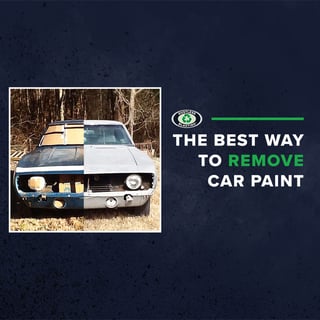
In the automotive prep and paint industry, the understanding is that paintwork on a car makes the first impression. The finished product needs to be top quality.
Well, that's easier for a new car rolling off the assembly line, but how does an auto body shop or a DIY'er get that same result on a damaged, rusty vehicle? It all starts with surface preparation and it doesn't have to be complicated.
If you're thinking about restoring a classic car yourself or hiring someone else to do it, you'll want to make sure to choose a solution that best suits your needs above all else. Let's go through the most common paint-stripping tools and compare them.
The most common methods for Stripping Car Paint
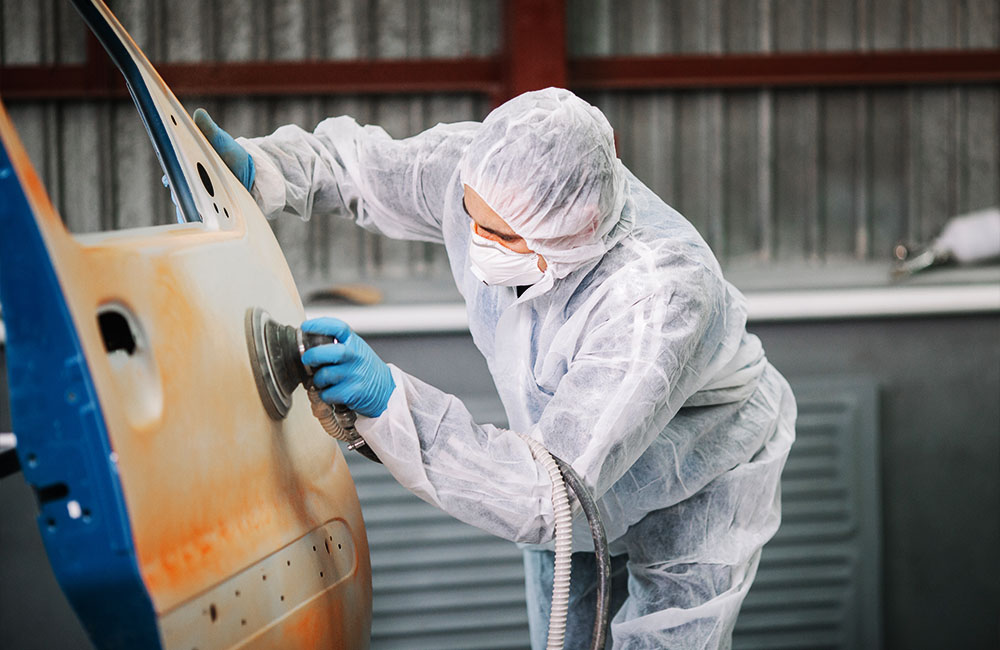
Sanding
Sanding is typically the easiest and most inexpensive option for DIY'ers. The real cost of using something like a sanding board or power sander is your time and physical effort. You can expect sanding a whole car to take one person multiple days at a minimum. Additionally, you may find that there are some tight spots on your car that hand sanders simply can't get to. For flat surfaces, a dual-action sander will speed up the process considerably but at the risk of generating enough heat to warp the car's sheet metal.
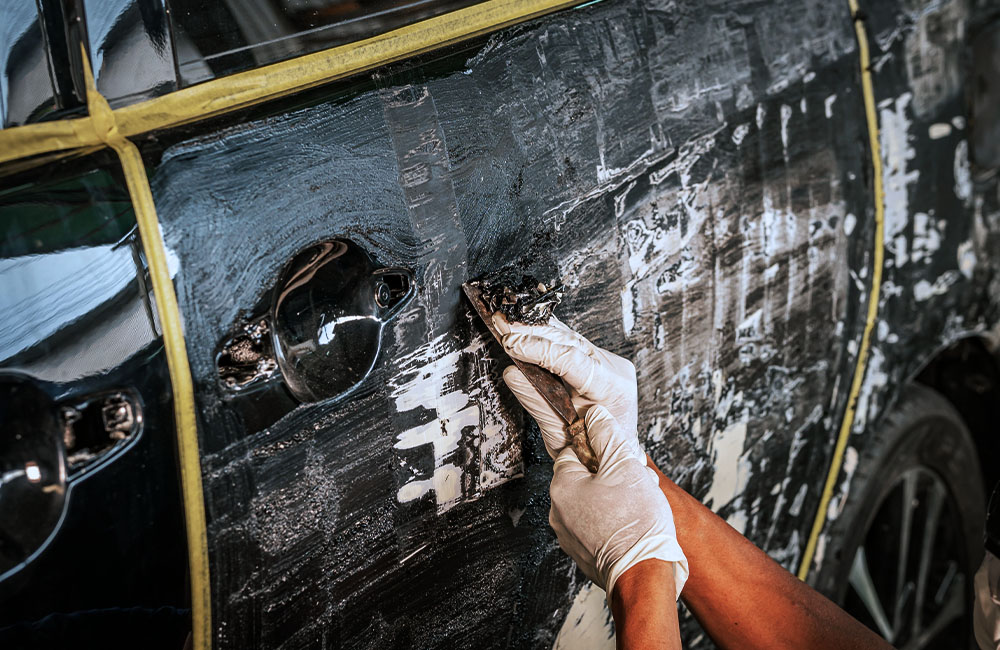
Chemical Stripping
Compared to sanding, chemical stripping offers a faster and more thorough solution at the cost of added complexity and health risks. Chemical strippers work by targeting the paint specifically, leaving the bare metal underneath undamaged.
While a chemical stripper will do a lot of the initial work for you, you still need to factor in the time it takes to scrape off the affected paint, clean the body to remove the remaining chemicals, and then sand the surface to achieve an anchor profile. There's a range of chemical stripper strengths out there -- you may find yourself needing to repeat this entire process if the first pass only strips away the top layer. Additionally, if you're not careful to keep the stripper away from the body's creases and seams, chemicals may get trapped and later seep out, ruining your new paint job.
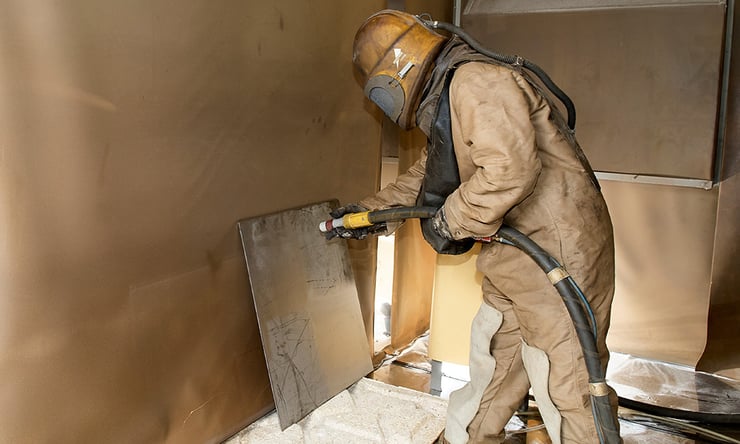
Media Blasting
Also known as dry blasting, media blasting works by using a high-pressure stream of abrasive material to strip away the paint from your car's surface. With a variety of choices of abrasive media and adjustable pressure, the operator can quickly adjust their removal strength to avoid damaging the bare metal substrate. Whether it's just one paint layer, multiple paint layers, rust, body filler, or a combination of them all -- media blasting machines have the flexibility and tools to tackle many car paint removal scenarios. And with enough capacity, they can strip paint off of a car in a matter of hours as opposed to days.
Dry media blasting has two major drawbacks:
- Thin panels, especially on newer cars, are prone to warping in part due to excessive heat buildup where the media meets the substrate.
- Without sufficient containment measures, dry media blasting produces dust clouds which can be a significant source of air pollution.
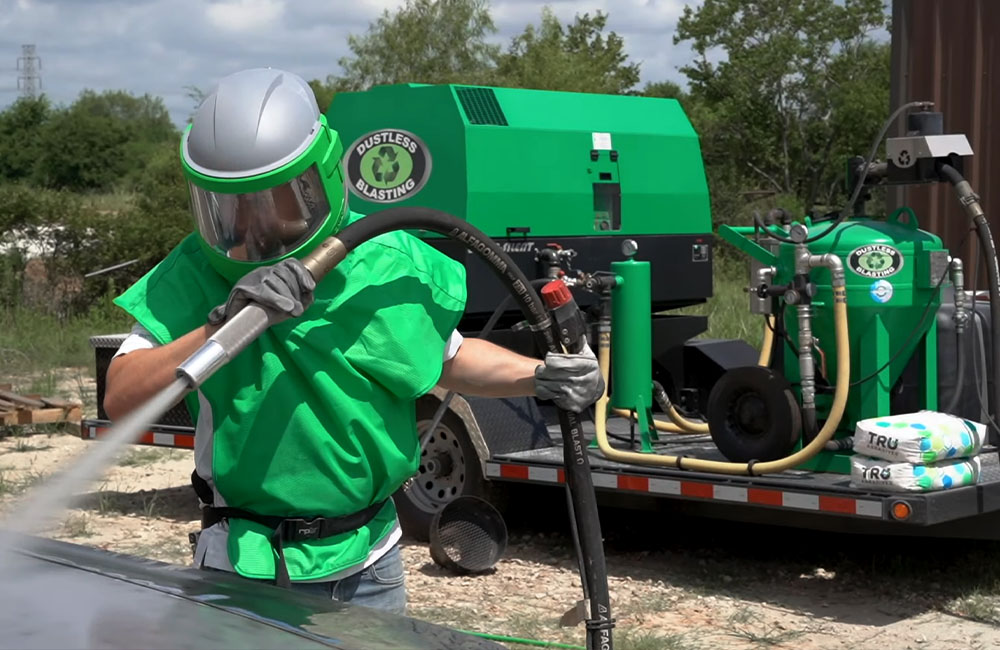
Why Dustless Blasting is the BEST Method for Automotive Paint Stripping
Dustless Blasting is the much-needed evolution of the traditional sandblasting tool. By introducing water into the blast pot, Dustless Blasting eliminates the drawbacks of traditional dry sandblasting while keeping the huge advantages. Quickly remove paint, primer, rust, and body filler, AND profile the metal surface in one easy step without creating a cloud of dust. The added water in the Dustless Blasting system keeps the substrate temperature low as you're blasting, which helps to prevent thin panels from warping due to heat.
Worried about rust? Our Rust Inhibitor product keeps the car surface clean and prevents flash rusting for up to 72 hours, giving you plenty of time to apply primer and prepare to put on a fresh coat of paint.
For jobs where dry blasting is preferred, these machines have you covered. Dustless Blasters can switch between wet and dry blasting as needed, including soda blasting.
when using dustless blasting, here's what we see most often
When stripping paint off a car, we often see Dustless Blasters wet blasting thin body panels and exterior pieces but then switching to dry blasting for interior work. It's much easier to blow dry media out of the nooks and crannies of a car interior compared to packed wet media.
Dean M., a business owner and member of our private Business Owners Facebook group, recommends doing interior work first:
Dry first! Then you can add water to the pot to finish. Too much time trying to dry out the pot if you go wet first.
-Dean M., Business Owner
get advice from other dustless blasters
One of the great benefits of buying a Dustless Blasting machine is getting access to our private Business Owner Facebook group, where business owners across the country share their experience, technical knowledge, and perspectives with one another.
Here are a few more examples of car blasting advice shared in the group:
There's plenty of reasons to go wet or dry. One example for wet is to reduce any airborne particulates. I prefer wet blasting. But I dry blast in tight spaces where I could get splash back and not be able to see through an obstructed helmet visor. They are both effective in removing paint and rust.
-John L.Make sure you tape off and know where all the VIN plates are. Watch carefully the big panels and if you start seeing the metal flex then move away from that area and hit another and then come back.
-Billy A.Blast at an angle not straight on.
-Shawn S.Did you ask your customer about his plan for primer? 9/10 times the customer will say "oh do you offer that service"? You can not only help your customer but you can also add in this case another 1500.00 to the invoice. You sell it by emphasizing how important that first seal coat is and that it needs to be right and you're the guy to do it.
-Scott W.
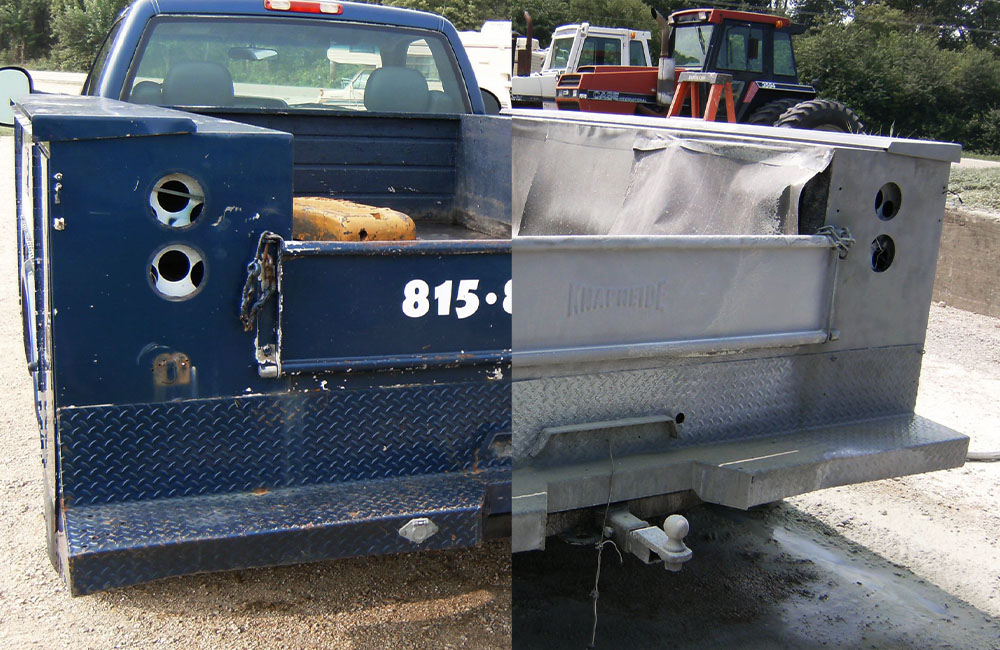
Removing Paint from your car doesn't have to be complicated
Auto body shops, collision repair centers, and individual service providers across the country have ditched the old methods of paint removal and made the switch to Dustless Blasting. These days, one simple step is all it takes to get your car primer and paint ready!
Learn More about Dustless Blasting
Now that you understand the various approaches to restoring a car, why not turn your knowledge into profit? Many surface preparation specialists start by buying one of our machines to restore a few classic cars only to discover the wealth of opportunity in this industry.

